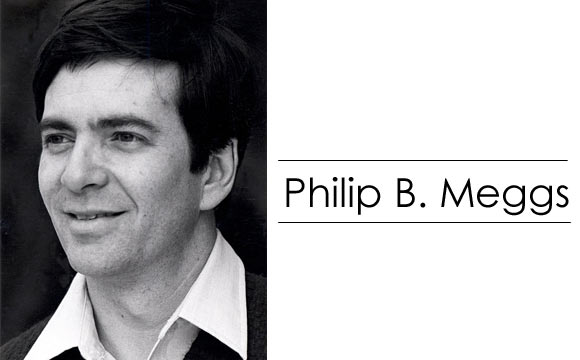
Philip B. Meggs was a celebrated twentieth century American graphic designer. Besides designing, he was also a historian, author of several notable books on graphic designing and a fine art professor. One of his books, titled History of Graphic Design is standardized as an essential reading material on the subject.
Born on May 30, 1942, in Newberry, South Carolina, Philip Baxter Meggs was raised by parents, Elizabeth Pruitt and Wallace Nat Meggs. He was twin to the prominent medical doctor of the era, William Joel Meggs. While his brother was into science, Meggs was more inclined towards arts. At the young age of 16, after school Meggs used to practice typesetting metal type and indulged in painting and drawing. He then went on to study fine arts at Virginia Commonwealth University (VCU) and earned a Master of Fine Arts. Later he was enrolled at Massachusetts College of Art from where he received an honorary doctorate. In 1964, he married his college sweetheart an art director and illustrator, Libby Phillips.
Subsequent to graduation, Meggs was appointed a senior designer at Reynolds Metals. Soon after, he joined A.H. Robins Pharmaceuticals as an art director. In 1968, he expanded his professional expertise to teaching when he accepted a teaching position at Virginia Commonwealth University. There he was a professor in the Communication Arts and Design Department and from 1974 to 1987 and later held the position as the chairperson of the department. During his chairing period, the enrollments in the department skyrocketed and the program gained popularity at national level. Additionally, he taught at the National College of Art and Design, Dublin and Syracuse University as a visiting faculty.
In 1974, Meggs began to teach a history of graphic design course influenced by the lack of research and instructive materials on the subject. His dedication to discover, record and understand the history of this profession culminated in him publishing his first iconic book, A History of Graphic Design (1983). Meggs continued to write while he was teaching at VCU. He successfully penned down multiple books and over 150 articles on design and typography. In fact, the Encyclopedia Britannica dedicated a section on graphic design to which he exclusively contributed.
Meggs have been deemed the most significant historian of design since Nikolaus Pevsner. However, his research on the subject is considered more extensive in comparison to Pevsner, since his book goes beyond the kind of graphic designing practiced in the nineteenth and twentieth century. What distinguished Megg’s account of history of graphic design is that it doesn’t exclusively depend on the traditional structure history of art. Unlike other historians, he was of the view that understanding of the past and its relation with art is essential to graphic design studies.
A noted contemporary graphic designer, Steven Heller remembers Meggs in the words that he has “built a monument to graphic design’s legacy”. Moreover, he was inducted into the Art Directors Hall of Fame and was presented Educator’s Award for lifetime achievement. The award was to honor his significant contribution in shaping the future of the fields of graphic design education and as well as his writings on the subject. In 1995, he received Award for Excellence in Teaching, Research, and Service from VCU. The American Institute of Graphic Arts awarded him AIGA Medal posthumously in 2004. Philip B. Meggs suffered from leukemia and spent years battling the cancer. Eventually death claimed him on November 24, 2002 and he was interred at Dale Memorial Cemetery in Virginia.

